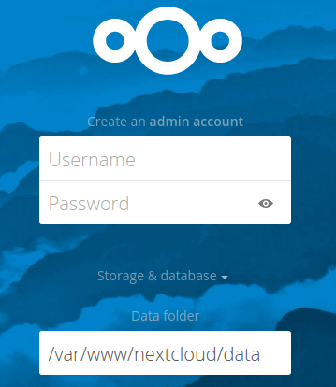
In this tutorial, we will show you how to install and configuration of Nextcloud on CentOS 8. For those of you who didn’t know, Nextcloud is an open-source self-hosted file sync and share application (Calendar, Contacts, Documents, Email, and more). The developers at Nextcloud are doing their best to give the users a more secure platform, fewer bugs, and overall a better product.
This article assumes you have at least basic knowledge of Linux, know how to use the shell, and most importantly, you host your site on your own VPS. The installation is quite simple and assumes you are running in the root account, if not you may need to add ‘sudo‘ to the commands to get root privileges. I will show you the step-by-step installation of Nextcloud on a CentOS 8 server.
Prerequisites
- A server running one of the following operating systems: CentOS 8.
- It’s recommended that you use a fresh OS install to prevent any potential issues.
- SSH access to the server (or just open Terminal if you’re on a desktop).
- A
non-root sudo useror access to theroot user. We recommend acting as anon-root sudo user, however, as you can harm your system if you’re not careful when acting as the root.
Install Nextcloud on CentOS 8
Step 1. First, let’s start by ensuring your system is up-to-date.
dnf update
Step 2. Install LAMP server.
A CentOS 8 LAMP stack server is required. If you do not have LAMP installed, you can follow our guide here. Also, install required PHP modules:
dnf install php php-common php-pecl-apcu php-cli php-pear php-pdo php-mysqlnd php-pgsql php-gd php-mbstring php-xml
Step 3. Installing Nextcloud on CentOS 8.
First, the thing to do is to go to Nextcloud’s download page and download the latest stable version of Nextcloud, At the moment of writing this article it is version 14.0.4:
wget https://download.nextcloud.com/server/releases/nextcloud-14.0.4.zip
Unzip the Nextcloud archive to the document root directory on your server:
unzip nextcloud-14.0.4.zip mv nextcloud /var/www/html
We will need to change some folders permissions:
chown apache:apache -R /var/www/html/nextcloud
Step 4. Configuring MariaDB for Nextcloud.
By default, MariaDB is not hardened. You can secure MariaDB using the mysql_secure_installation script. You should read and below each step carefully which will set a root password, remove anonymous users, disallow remote root login, and remove the test database and access to secure MariaDB.
mysql_secure_installation
Configure it like this:
- Set root password? [Y/n] y - Remove anonymous users? [Y/n] y - Disallow root login remotely? [Y/n] y - Remove test database and access to it? [Y/n] y - Reload privilege tables now? [Y/n] y
Next, we will need to log in to the MariaDB console and create a database for Nextcloud. Run the following command:
mysql -u root -p
This will prompt you for a password, so enter your MariaDB root password and hit Enter. Once you are logged in to your database server you need to create a database for Nextcloud installation:
MariaDB [(none)]> create database nextclouddb; MariaDB [(none)]> grant all on nextclouddb.* to 'nextclouduser'@'localhost' identified by 'password'; MariaDB [(none)]> flush privileges; MariaDB [(none)]> exit;
Step 5. Configuring Apache web server for Nextcloud.
We will create Apache virtual host for your Nextcloud website. First create ‘/etc/httpd/conf.d/vhosts.conf’ file with using a text editor of your choice:
nano /etc/httpd/conf.d/vhosts.conf IncludeOptional vhosts.d/*.conf
Next, create the virtual host:
mkdir /etc/httpd/vhosts.d/ nano /etc/httpd/vhosts.d/yourdomain.com.conf
Add the following lines:
<VirtualHost YOUR_SERVER_IP:80> ServerAdmin webmaster@yourdomain.com DocumentRoot "/var/www/html/nextcloud/" ServerName yourdomain.com ServerAlias www.yourdomain.com ErrorLog "/var/log/httpd/yourdomain.com-error_log" CustomLog "/var/log/httpd/yourdomain.com-access_log" combined <Directory "/var/www/html/nextcloud/"> DirectoryIndex index.html index.php Options FollowSymLinks AllowOverride All Require all granted </Directory> </VirtualHost>
Save and close the file. Restart the apache service for the changes to take effects:
systemctl restart httpd.service systemctl enable httpd.service
Step 6. Configuring Firewall for Nextcloud.
Create a firewall rule to allow access from external machines to the Nextcloud:
firewall-cmd --permanent --zone=public --add-service=http firewall-cmd --permanent --zone=public --add-service=https firewall-cmd --reload
Step 7. Accessing Nextcloud.
Nextcloud will be available on HTTP port 80 by default. Open your favorite browser and navigate to http://yourdomain.com/ or http://server-ip-address/ and complete the required steps to finish the installation. If you are using a firewall, please open port 80 to enable access to the control panel. What you do with Nextcloud is up to you. You can add new modules or just use it as cloud-based file sync and share. You can install the Android app and even make use of the ownCloud desktop clients (they’ll work fine with Nextcloud).

Congratulations! You have successfully installed Nextcloud. Thanks for using this tutorial for installing Nextcloud personal cloud storage on your CentOS 8 system. For additional help or useful information, we recommend you check the official Nextcloud website.